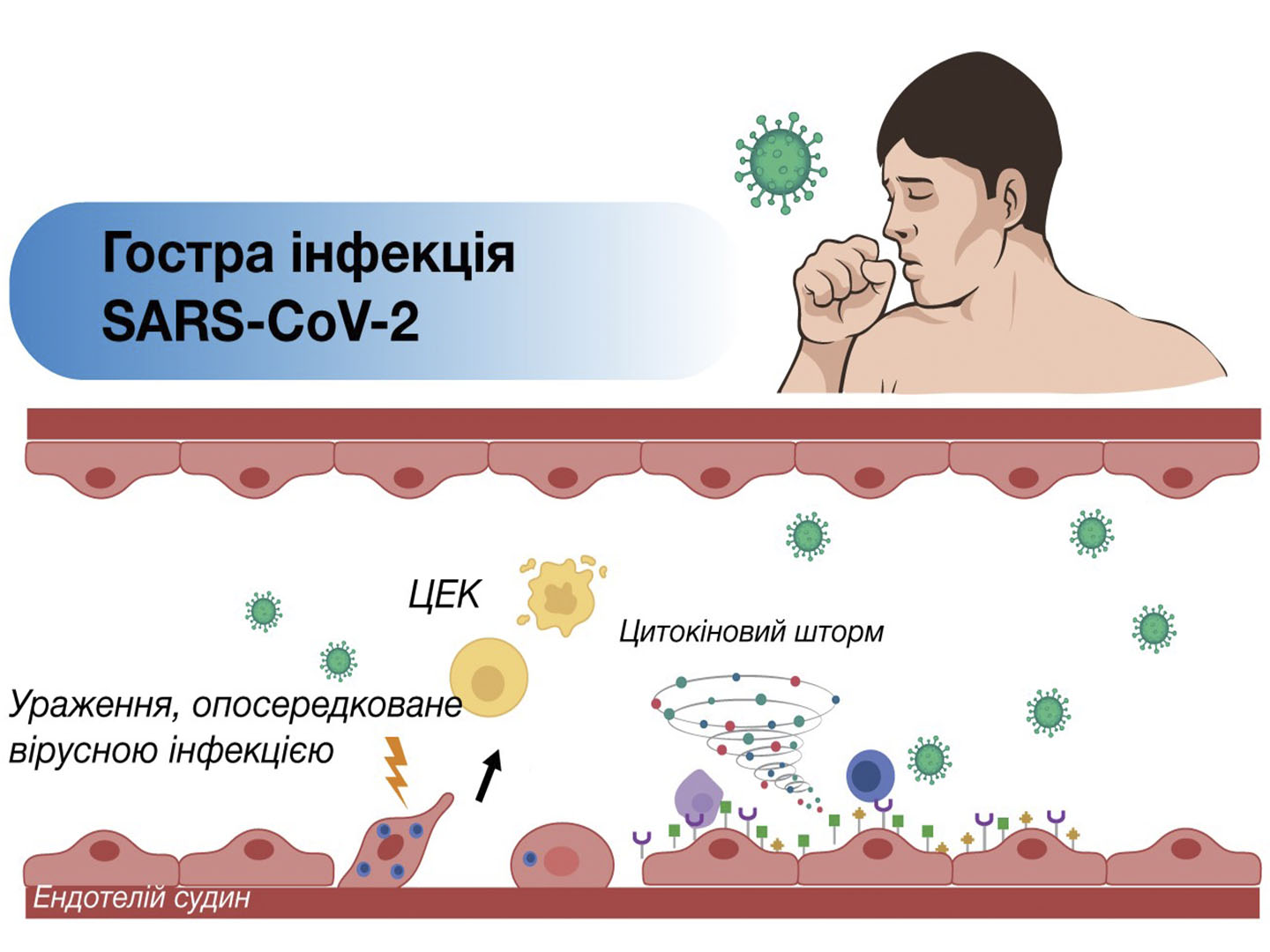Effects, potential and advantages of Sorbilact – a combination preparation for infusion
Romodanov Neurosurgery Institute of National Academy of Medical Sciences of Ukraine, Kyiv
In the literature review the current state and problems of fluid therapy are described; comparison of different preparations for infusions is given. The application of Sorbilact – complex medicine on the sorbitol basis – is considered in details; effects, potential and advantages of preparation, as well as the results of clinical research are described.
Key words: polytrauma, shock, cerebral edema, meningoencephalitis, acute renal failure, stimulation of intestinal tract, chronic pulmonary heart, infusion therapy, detoxification therapy, Sorbilact, mannitol, rebound syndrome.
Infusion therapy is a field of medicine devoted to management of body functions by means of targeted impact on morphological composition and physiological properties of body tissues via administration of organic and inorganic transfusion drug products. The main purpose of the infusion therapy is restoration of impaired homeostasis which determines its main tasks: replenishment of volume of blood circulation (VBC), hypovolemia management, restoration of water-electrolytic balance and acid-base balance, improvement of microcirculation, management of disorders of blood rheological and coagulatory properties, metabolic disorder management, detoxification and parenteral feeding [3].
According to various authors [17, 24], up to 30–40% of patients staying in multiprofile hospitals require infusion-transfusion therapy, at that, the major part accounts for patients with planned surgeries; in case of road traffic and other accidents this number exceeds 80%.
It should be noted that among all transfused solutions, more than 55% account for the products made in Ukraine. Despite of apparent diversity of registered medicinal products a rather short list of infusion products is used in the clinical practice. Until recently this list has included simple (physiologic sodium chloride solution, glucose solutions) and few complex (Ringer’s solution, Ringer-Lockes solution etc.) solutions, dextran solutions (polyglucin, rheopolyglucin), polyvinylpyrrolidone solutions (hemodez), protein preparations (gelatinolum, albumin, protein). Over the last years this list has changed qualitatively: due to discovery of polyvinylpyrrolidone (PVP) thesaurismosis, manufacture and usage of polyvinylpyrrolidone derivatives has been prohibited in many countries including Ukraine; dextran usage has been reduced substantially, which is attributable to their severe adverse effects, such as a high anaphylactogenicity (in 60 – 70% of cases) and an ability to provoke “a dextran syndrome” (renal and pulmonary injuries and hypocoagulation). Drug products containing blood plasma native proteins (albumin, protein) are used more and more seldom due to their high allergenicity, pyrogenicity, their ability to aggravate tissue interstitial edema, primarily pulmonary edema, and due to risk of transmission of haemoinfections. On the other hand, synthetic crystalline amino acids and hydroxyethyl starches have become a common practice. The former allowed to solve the problem of parenteral feeding. The latter quickly superseded dextrans being much more effective products intended for prompt restoration of VBC and hypodynamic balance. But along with this, among unsolved problems, there occurred to be detoxification and dehydration therapy, improvement of hemorheology and microcirculation, correction of acid-base balance and some others [12].
In the recent years, specialists from different branches of medicine have more often given priority to a new domestic complex infusion product – Sorbilact – developed by the members of the Institute of Blood Pathology and Transfusion Medicine of the National Academy of Medical Sciences of Ukraine, which is based on a nontoxic hexatomic alcohol – sorbitol.
Sorbitol is widely used in the food manufacturing industry and medicine. Sorbitol is quickly included into the general metabolism, 80–90% of it is transformed in liver and converted to glucose, a part of which is used for prompt energy demands, another part accumulated in the form of glycogen, 5% is deposited in the cerebral tissue and cross-striped muscles, and 6 – 12% is excreted with urine.
Besides sorbitol represented in the product in hypertonic, as related to blood plasma, concentration (1095 mmol), Sorbilact contains cations (Na+, К+, Са2+, Mg2+), anion С1– and lactate-anion; total osmolarilty of Sorbilact is 5.5 times higher than that of blood plasma (1.7. Osm). Owing to high osmolarity, Sorbilact provokes fluid shift from intercellular space into the blood stream, which is accompanied by the increase in VBC due to plasma volume increase and contributes to improvement of microcirculation and tissue perfusion. Owing to the pronounced osmotic diuretic effect of sorbitol associated with the absence of natural mechanisms of reabsorption of polyatomic alcohols in the proximal renal tubules, there is observed a pronounced diuretic action of these drug products. In addition, sorbitol, partially metabolized to fructose, contributes to normalization of carbohydrate and energy metabolism. Sorbitol also stimulates fatty acid oxidation via non-ketogenic metabolic route and contributes to easier inclusion of ketone bodies into Krebs cycle, which has an especially beneficial impact on the improvement of functional state of hepatocytes, which is the place of glycogen depot replenishment.
It is important to note that sorbitol intensifies the intestinal motility owing to the direct impact on the neuroreceptor system of intestinal wall and enhancement in synthesis and secretion of villikinin, cholecystokinin and vitamins of group B. Lactate-anion contributes to correction of acid-base balance of blood plasma and, by taking part in the reactions of carbohydrate-energy metabolism, restores and stimulates cell functions of reticular endothelial system, liver and kidneys. All this determines the broad spectrum of Sorbilact effects, namely: anti-shock, energy, detoxification, diuretic, stimulation of intestinal peristaltics, and neutralization of metabolic acidosis [20].
By the present, biological properties and effects of Sorbilact on the human body have been established, optimal and maximum allowable doses have been determined, indication scope has been scientifically justified and product safety has been proven. For the period of 7 years of Sorbilact usage in the clinical practice (and it is more than 10 million of the product bottles), there has been reported no serious, life-threatening complications associated with the product administration. At the present time Sorbilact is recommended for application in different branches of medicine by a certain number of outstanding Ukrainian scientists, among whom are: in general surgery – member of AMS of Ukraine M.P. Pavlovskiy [19], member-corr. of AMS of Ukraine M.P. Zakharash [14]; in oncology – professor V.V. Ganul [6]; in urology – member of AMS of Ukraine A.F. Vozianov [1]; in the infectious disease clinic – member of AMS of Ukraine Zh.I. Vozianova [2], professor V.V. Gebesh [7, 8]; in neurosurgery – member-corr. of AMS of Ukraine – N.E. Polishchuk [20]; in intensive care – member-corr. of AMS of Ukraine V.I. Cherniy [26], chief anaesthesiologist of MoH of Ukraine, professor F.S. Glumcher, and professors I.P. Shlapak [28, 29], A.I. Treshchinskiy [23], M.A. Georgiyants [9].
As of today, Sorbilact is used in many branches of medicine, such as: abdominal surgery (for example, in patients undergone abdominal aortic aneurysm surgery); oncology; neurosurgery (in severe craniocerebral trauma, acute cerebrovascular disease, cerebral tumour and inflammatory brain diseases accompanied by cerebral edema and swelling) [20, 23, 25]; neurology (in cytomegaloviral, herpetic and other encephalitises of viral etiology); pediatrics; pulmonology [12, 13]; traumatology [21]; resuscitation and intensive care (in polytrauma, shock of various genesis, cerebral edema) [22, 26, 29]; treatment of infectious diseases (in meningococcal disease and bacterial meningitis, hepatitis, leptospirosis) [2, 8] and in the postoperative period aimed at prevention and treatment of enteroparesis [19].
It is known that in pathogenesis of most diseases, endogenous intoxication syndrome is given a leading position (focus of inflammation, areas of ischemia or tissue destruction of any origin may be sources of endogenous intoxication), which is characterized by staging: stage I – development of endotoxicosis; stage II is characterized by toxemia; stage III (terminal) is characterized by multiple organ failure syndrome associated with injuries of efferent organs and systems. Until recently the main components of detoxification therapy have been crystalloid solutions (electrolytes, glucose) and colloid solution (neohemodez). However, multiple-dose administration led to the development of a severe complication – PVP-thesaurismosis conditioned by the toxic impact of polymer macrofractions on the cells of reticular endothelial system. Application of Sorbilact opens new prospects in respect of the detoxification therapy. As it has been mentioned previously, this preparation contains cations Na+, К+, Са2+, Mg2+, anion С1–, organic lactate-anion and sorbitol in hypertonic, as related to blood plasma, concentration. Such a combination of components and their concentrations determines the detoxification effect of Sorbilact as it fulfills the following main tasks: it intensifies tissue perfusion in a pathologic focus, which contributes to rapid elimination of toxic factors into the blood stream; increases VBC resulting in lowering of toxic substance concentrations in the blood stream; binds circulating toxins, quickens their elimination from the body via forced diuresis; in addition, this preparation exerts a nephroprotective action and has an ability to enhance the diuresis in acute renal failure (ARF). It is significant that lactate-anion contributes to correction of plasma acid-base balance and stimulates functions of liver and kidneys RES.
It should be noted that in presence of certain pathological states (increased intracranial pressure (after traumas and surgeries), cerebral edema, acute renal or hepatorenal failure, ascites (associated with combination therapy), quick elimination of toxins in case of intoxications, surgeries with application of artificial circulation and some others), there is often used mannitol [30] that exerts effects similar to Sorbilact. Mannitol as well as Sorbilact is referred to pharmacological group of osmotic diuretics, provokes reduction of blood viscosity, fluid replacement from tissues into the blood stream and exerts a pronounced diuretic effect due to increase of blood plasma osmotic pressure and reduction of water reabsorption. Mannitol is slightly metabolized in the liver producing glycogen. However, according to the findings of clinical studies, effects of Sorbilact are more versatile, which is attributable to the multicomponent composition of its solution (it exerts not only diuretic, anti-edemic and detoxification effects but it also contributes to the restoration of acid-base balance (owing to sodium lactate that is included into product composition), improvement of metabolism in the body, replenishment of glycogen depot in the hepatocytes, early recovery of intestinal motility in posttraumatic or post operative periods; it has an anti-ketogenic action; when used in combination with amino-acid mixtures and immunonutrients, it covers total energy needs in the early postoperative period). Moreover, administration of Sorbilact does not cause rebound syndrome, which is often observed when traditional diuretics are used and which is attributable to staging of their pharmacodynamics; complications are observed very rare (as a rule, they are developed due to considerable overdose of the product).
Development of rebound syndrome is of extreme importance in case of cerebral edema that could be met in neurosurgical and neurologic practices. The first phase of action of osmotic diuretics is characterized by a prompt (within 15–30 minutes) reduction of intracranial pressure. There is observed a simultaneous reduction of intratissue pressure in those brain regions where vascular regulation and permeability of blood-brain barrier (BBB) are not damaged; at the same time, in brain regions where BBB is damaged, intratissue pressure may be increased by 10–25%. Phase II (30–90 minutes after administration of osmotic diuretic) is characterized by maximum reduction of cerebrospinal fluid pressure (up to 50%) and intratissue pressure (up to 88%), which is accompanied by increase of cerebral blood flow values by 20–40%. The third phase (2.5–3.5 hours post drug product administration) is characterized by restoration of baseline cerebrospinal fluid pressure, while changes of intratissue pressure values may be diverse. In particular, in the aftereffect phase (upon rebound syndrome occurrence), cerebrospinal fluid pressure in 65% of cases and intratissue pressure in 45% of cases exceed baseline values. Absence of this severe complication is a characteristic property of Sorbilact and it is attributable to a versatile action of the product itself as well as to transformations of its component – sorbitol – in the body.



